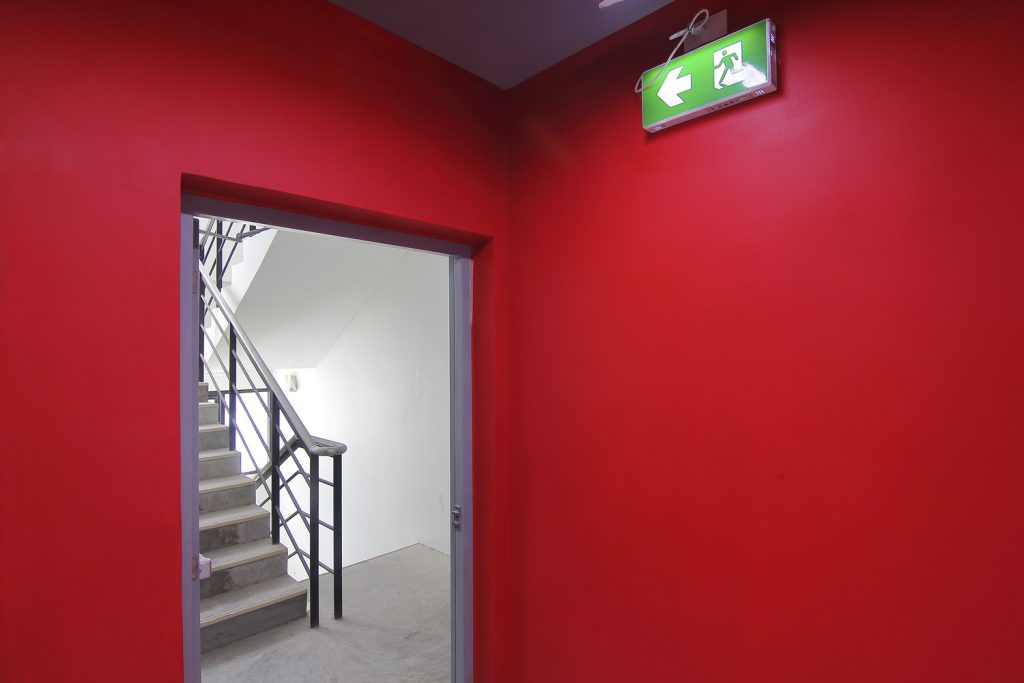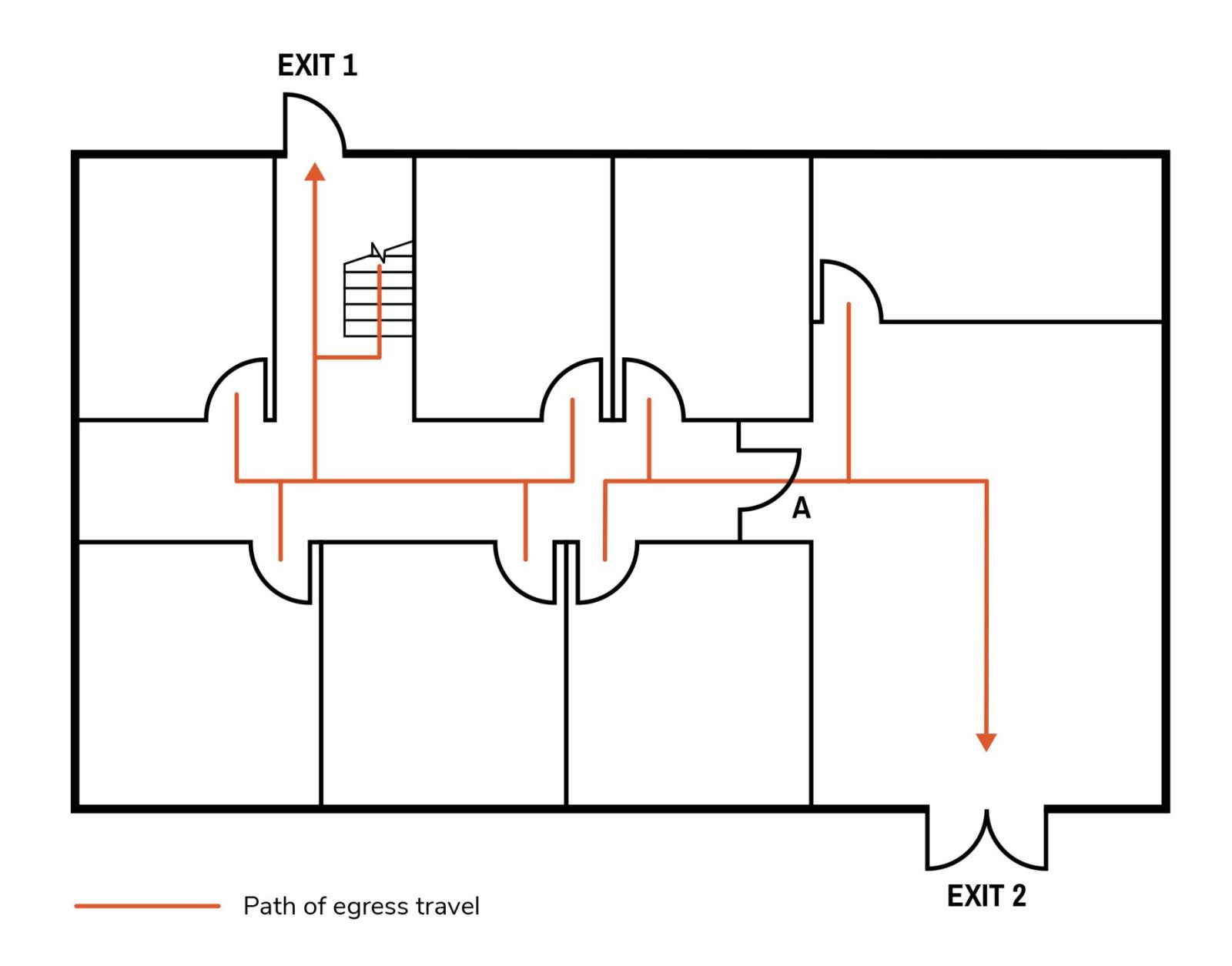Spark Notes: Door Swing Direction

Does this door swing in the right direction?
I often get questions about whether a door swings in the correct direction to allow occupants to leave a crowded restaurant, retail store, or movie theater. Generally, the requirement is that a door must swing in the direction of egress travel when there are fifty or more occupants in the space, regardless of the occupancy classification. If the space is considered a high-hazard occupancy—like one that would store flammable liquids or fireworks—then the door must always swing in the direction of egress travel, regardless of the number of occupants.
But why? As the occupant load approaches fifty people, there are a few concerns:
- In an emergency, individuals may gather at a closed door.
- If the door opens toward the group, it can pose challenges for opening and operating.
- Optimal flow through the exit is achieved when the door swings in the direction of travel, allowing occupants to easily flow through the opening.
For an individual room, this is straightforward to calculate since the number of occupants is based on a single space. However, for an area that includes multiple rooms and spaces, the occupant load must be accumulated to account for all occupants that would need to use the egress door. The requirement for door “A” to swing from left to right in the image below is determined by the occupant load of the various rooms situated to the left of the door. Note that even though the space is served by two exits, the requirement is based on the total occupant load in the area, not the number of people using the specific door.

Code Requirements
The 2021 International Building Code (IBC) requires a door to swing in the direction of egress travel as follows:
- Rooms or spaces with an occupant load of fifty or more persons.
- When serving high-hazard occupancies.
However, the local, applicable codes should always be reviewed. For example:
- New York City (NYC) allows egress doors to swing in either direction for up to seventy-four occupants for most occupancy types, as compared to the fifty occupants previously mentioned for IBC. In addition to high-hazard occupancies, NYC requires all doors in factory-industrial occupancies to swing in the direction of travel, regardless of occupant load.
- California requires doors to swing in the direction of egress travel for all exterior egress doors.
- When the National Fire Protection Association’s NFPA 101 Life Safety Code is applicable (such as in hospitals), exit stair and exit passageway doors must always swing in the direction of travel.
There are also specific instances where doors are required to swing in the direction of travel. For example:
- Recent IBC editions require doors from refrigeration machinery rooms greater than 1,000 sq ft in area to swing in the direction of egress travel, regardless of the number of occupants in the room.
- NFPA 70 has requirements for doors to swing in the direction of egress travel for certain rooms and areas containing high-voltage electrical equipment.
When in doubt, a qualified fire life safety consultant can help determine how the codes apply to each situation and the best approach for your project.